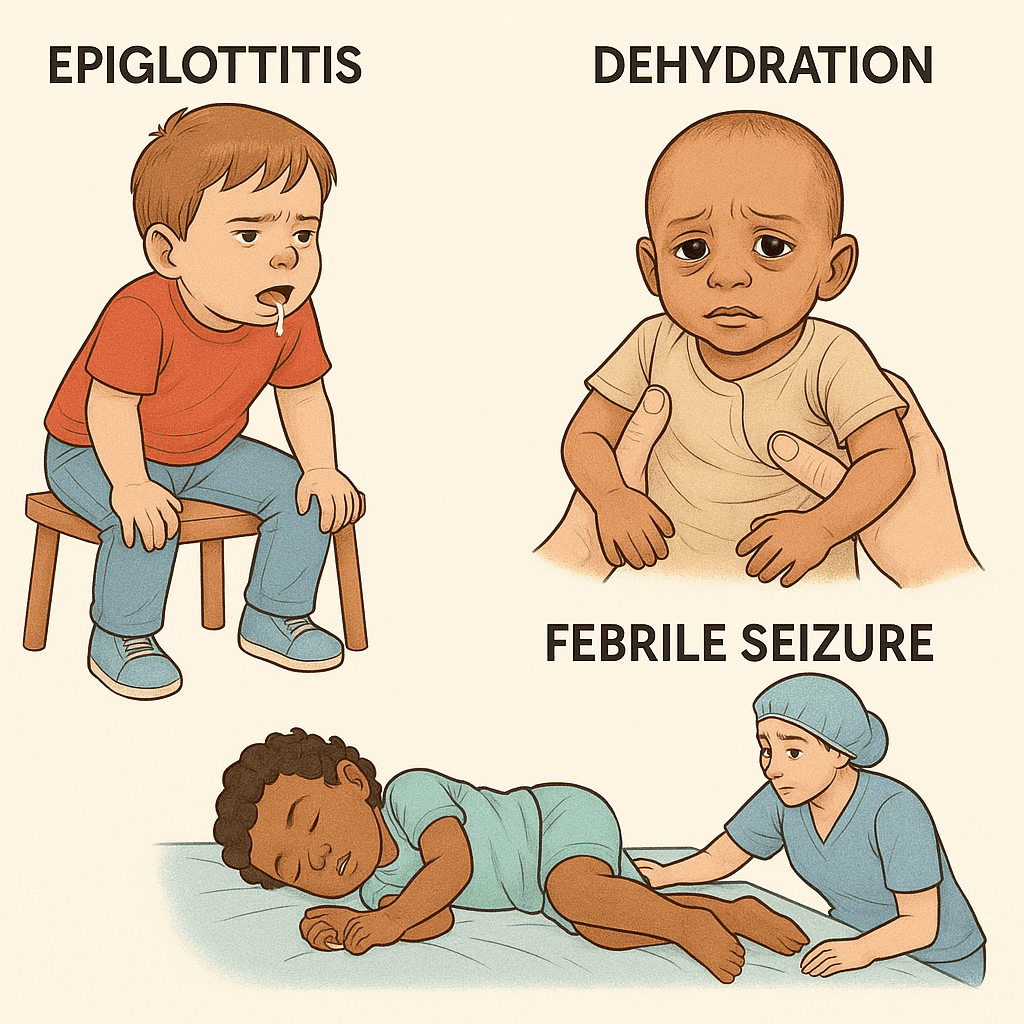When it comes to pediatric nursing, emergencies can escalate quickly. For every registered nurse (RN nurse), identifying red flags early is crucial for saving lives and improving outcomes. On the NCLEX, questions about pediatric emergencies often test both knowledge and prioritization. This guide breaks down three high-yield topics—epiglottitis, dehydration, and febrile seizures—with simplified nursing priorities you can apply both in exams and in practice.
1. Epiglottitis – A True Airway Emergency
Epiglottitis is a life-threatening condition caused by inflammation of the epiglottis, usually from infection.
Key Signs
- Sudden onset high fever
- Drooling (can’t swallow)
- Stridor and tripod positioning
- Extreme anxiety and restlessness
Nursing Priorities
- Do NOT attempt to visualize the throat (risk of airway obstruction).
- Keep the child calm—crying worsens obstruction.
- Ensure emergency airway equipment is at the bedside.
- Prepare for intubation or tracheostomy if necessary.
💡 NCLEX Tip: Think “3 D’s” – Drooling, Dysphagia, Distress = Epiglottitis.
2. Dehydration in Children
Children are more vulnerable to fluid loss due to higher metabolic rates and fluid turnover.
Signs by Severity
- Mild: Slight thirst, dry mucous membranes
- Moderate: Sunken fontanelle, tachycardia, delayed cap refill
- Severe: Lethargy, hypotension, mottled skin, shock
Nursing Priorities
- Monitor vital signs and weight closely.
- Oral rehydration for mild cases; IV fluids for moderate/severe.
- Track urine output and lab values (Na+, K+).
- Educate parents on early signs of dehydration.
💡 RN Nurse Tip: Always calculate IV fluids carefully—fluid overload is just as dangerous as dehydration.
3. Febrile Seizures
Febrile seizures are common in children aged 6 months–5 years, triggered by rapid rises in temperature.
Nursing Priorities
- Stay with the child and ensure safety (prevent injury).
- Do not restrain or place objects in the mouth.
- Position on the side to maintain airway.
- After seizure ends, manage fever (antipyretics, cooling measures).
- Educate parents: most febrile seizures are benign, but follow-up is essential.
💡 NCLEX Alert: The priority is always airway and safety during seizures.
Why This Matters for Nurses
For any nurse preparing for the NCLEX or practicing at the bedside, knowing these emergencies is non-negotiable. Whether you are studying with a nursing bundle or working as a registered nurse, recognizing early warning signs, acting fast, and prioritizing care can mean the difference between life and death.
Final Thoughts
Epiglottitis, dehydration, and febrile seizures are high-priority topics in pediatric nursing. They test your ability to assess, prioritize, and act quickly—skills that every RN nurse must master. Keep these quick guides in mind during your nursing bundle review sessions, and you’ll be more prepared both for the NCLEX and for real-world practice.

